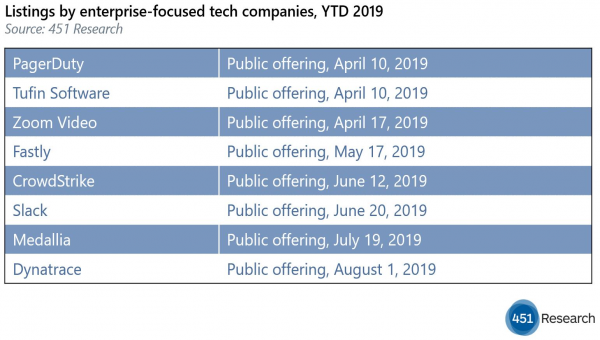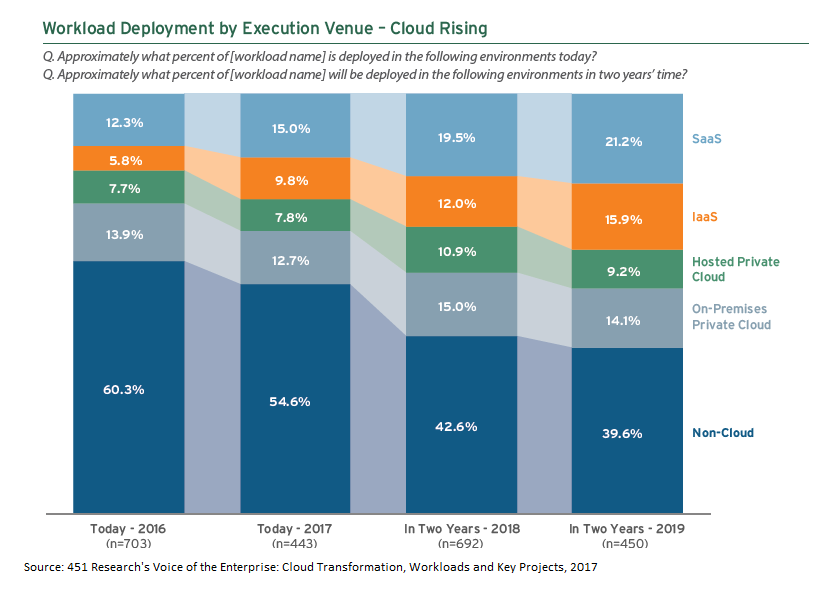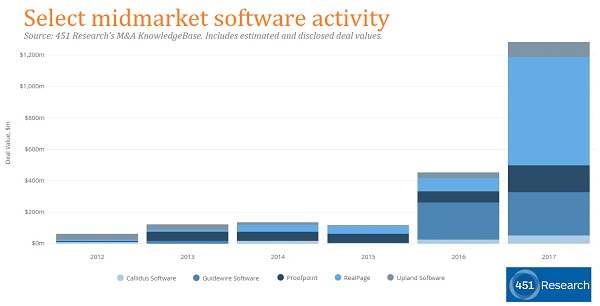by Scott Denne
IBM’s $33.4bn acquisition of Red Hat – announced a year ago today – propelled an already heated market for IT infrastructure management targets to a stratospheric level. But that corner of the tech M&A sector has cooled precipitously since then, with this year tracking toward the lowest point in a decade as the most stalwart buyers back away from the space.
It wasn’t just Big Blue’s purchase that drove infrastructure management M&A in 2018 to a record $94.4bn – about 10x the amount we see in a typical year, according to 451 Research‘s M&A KnowledgeBase. Seven other strategic buyers spent $1bn or more on acquisitions in infrastructure management, although few of those are likely to continue to make big IT management deals. Salesforce’s $6.6bn pickup of MuleSoft was a one-off as that company typically buys other SaaS products. And Broadcom’s $18.9bn reach for CA, and subsequent moves to boost the target’s cash flow, took out one of the most active acquirers of infrastructure management.
The buyers that typically drive up the totals have been quiet this year and spending on the category sits at $5.9bn for 2019 – the lowest since 2009, our data shows. The IT infrastructure market is in the middle of a major transition driven by the continued expansion of cloud computing. According to 451 Research‘s Voice of the Enterprise: Digital Pulse, nine of 10 organizations are moving, rebuilding or updating their IT stack to run mission-critical workloads on more modern infrastructure.
But the move to cloud computing (public, private or hybrid) is well underway, leaving legacy vendors with a choice between making a massive bet to keep up (as IBM did by nabbing Red Hat and VMware is doing through a steady pace of hybrid and multi-cloud purchases) or shifting to ancillary areas. Cisco, for example, continues to actively acquire companies, although most of its recent transactions have been in support of its security and enterprise collaboration businesses. Or Citrix, whose last deal, the $200m acquisition of Sapho in 2018, expanded its Workspace line of products.
Figure 1:





